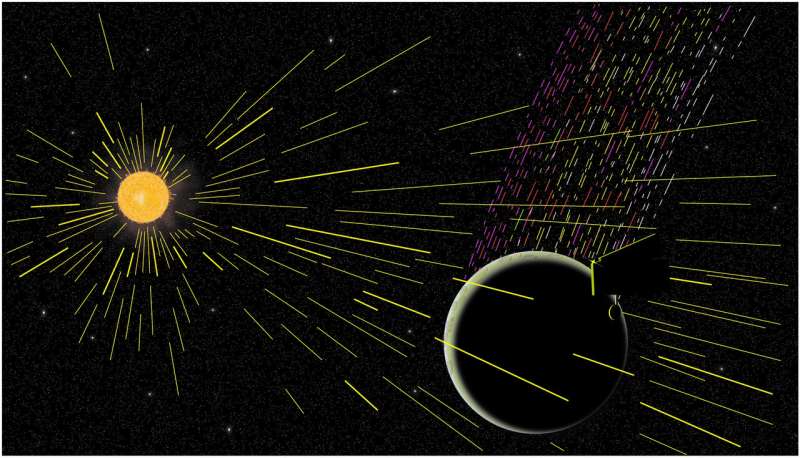May 7, 2020 report
Carbon emissions on the moon put theory of moon birth in doubt

A team of researchers affiliated with multiple institutions in Japan has found evidence of embedded carbon emissions on the moon. In their paper published in the journal Science Advances, the group describes their study of carbon data from the KAGUYA lunar orbiter and what they learned from it.
After the manned moon missions of the 60s and 70s brought back samples of lunar rocks, scientists began formulating a theory to explain how the moon came to exist. That theory reached fruition in recent years as it became accepted that the moon was formed from material that was expelled when a large planet collided with the Earth. Part of the theory hinges on data from the moon rocks that indicate volatile carbon vaporizing from the moon due to the heat from the massive impact. But now, it appears that there is ancient carbon embedded in the moon's surface, suggesting some changes may have to be made to the theory of the moon's birth.
The work involved studying a year and a half of data from the KAGUYA lunar orbiter, focusing specifically on carbon emissions. They found that the moon was emitting more carbon than has been thought, and more than could be accounted for by new carbon additions, such as the solar wind or collisions with micrometeoroids. They also found that some parts of the moon have been emitting more carbon than others—the basaltic plains, for example, emit more carbon than the highlands. The researchers suggest this is because surface material on the plains is newer than material in the highlands and thus has had less time to vaporize.
The findings by the researchers suggest that the moon has a large amount of ancient carbon beneath its surface, and it has likely been there since the moon was formed. How it could have persisted on a very hot early moon remains a mystery. The researchers also note that their approach could be applied to the study of other celestial bodies in the solar system and that they intend to use it to learn more about carbon emissions from Mercury and Phobos.
More information: Shoichiro Yokota et al. KAGUYA observation of global emissions of indigenous carbon ions from the Moon, Science Advances (2020). DOI: 10.1126/sciadv.aba1050
Journal information: Science Advances
© 2020 Science X Network





















